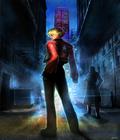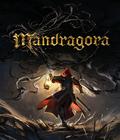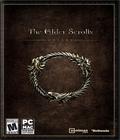
Genre: Fighting
Developer: Dimps Corporation
Publisher: Atari
Release Date: November 16, 2004
Buy 'DRAGON BALL Z: Budokai 3': PlayStation 2
 It seems like Dragon Ball, in vanilla, Z, or GT flavors, has been on American television pretty much constantly since some time in 1996. Reviled and beloved, it's right up there with Pokemon as one of the shows that the non-anime watcher thinks of when they think of anime. The Internet search engine Lycos has reported that Dragon Ball has been among the top fifty most searched for terms on the 'net every year since 1999, and that's only when they started keeping track.
It seems like Dragon Ball, in vanilla, Z, or GT flavors, has been on American television pretty much constantly since some time in 1996. Reviled and beloved, it's right up there with Pokemon as one of the shows that the non-anime watcher thinks of when they think of anime. The Internet search engine Lycos has reported that Dragon Ball has been among the top fifty most searched for terms on the 'net every year since 1999, and that's only when they started keeping track.
It's a popular show, that's all I'm saying here.
The games based on the Dragon Ball lineage haven't really fared so well. Dragon Ball Z in particular has a number of titles out there that ride the line between passable and just plain bad. The Budokai series startled and amazed many fans by simply failing to be an awful game, and indeed it was actually quite well reviewed and congratulated all around as being, if not a problem-free wonderland of fun, at least a playable and engaging fighting game.
Now we're up to Dragon Ball Z: Budokai 3, and quite frankly, it's the best game to come out of the series so far. That's not just because it plays pretty well, and it's not just because it's stuffed full of secrets and hidden features to an astonishing degree. Budokai 3 is good because it looks and sounds almost exactly like the show itself, and almost every feature of gameplay is carefully tuned to add to the atmosphere. This is a game built from the ground up to make people who like the anime go, "Hey, that's right!" while they're playing the game, while still remaining comprehensible and fun to non-fans of the show.
The most instantly attention-grabbing thing about this game is the way it looks. For a lot of gamers, it's been a long, hard road to justify the cel-shaded look in video games. If you haven't been convinced by now, though, Budokai 3 should just about do it. While still looking very subtley 3D and rounded out, the DBZ crew sport broad thick black outlines and heavy flat-shaded colors, looking very cartoony and bright. If you've played Budokai 2 you'll probably notice that the shading effects here are much less grainy looking and more natural-seeming. Character models are also often surrounded by a glowing aura of flicking energy, growing brighter and more intense as their power level rises.
The environments they fight in are less flat and more traditionally rendered, but for the most part, that's okay because they also look just fine. Battles can take place in a number of fairly diverse settings, from the Urban area full of vehicles and buildings to the long dusty vistas of the Mountain areas. Specific settings from the show also make an appearance when called for. When Goku fights Freiza in a final showdown on the alien planet Namek, the huge lava geysers and crumbling rock formations give a not-very-subtle cue that the place is falling to pieces around them. Again, if you've played the previous games, you'll notice that not a lot has changed, but that there's a level of detail which is a step upward.
A big part of the Dragon Ball Z "look" is tied up in the attack animations, and those are also well done. Most of the characters seem to share the same basic pool of attacks, save for special moves and some unique deviations between characters. Frieza and Cooler, for example, mix in some attacks with their tails, while the muscle-bound giant Broly is unlike other Saiyans in that he uses Huge-Fu or something instead of traditional looking martial arts strikes. In addition to the usual kicks and punches, you've got your ki blasts. Tossing around balls of energy has never looked so good, and it lights up the environment and fighters gorgeously. It makes me wish for a stage with night-fighting or some rain to sparkle off of these effects. Generally, battling in this game is a surprisingly visual experience, as clouds of dust get kicked into the air, sparks of light fly from the two combatants, and the ground develops streaks and pockmarks from missed attacks and skidding feet.
The other big boost this game gets is in the audio department. Big meaty punching sounds mix in with whooshes of power-charging and the rock-ish guitar soundtrack to make Budokai 3 pretty effective when it comes to sounding good. All the English voice actors reprise their role, or roles, or in Chris Sabat's case, his stadium of characters (What, does this guy own the VA studio or something?). Blasts and explosions all sound basically like they were lifted right out of the show.
Now we get down to the fighting itself, which is ... kind of formulaic, actually. As mentioned above, almost all of the characters have the same attacks and attack patterns. Pushing punch-punch-punch-punch-energy blast is the same combo for everyone involved, which can make fighting feel either a little tedious or nicely streamlined, depending on your approach to fighting games. Either way, it's almost as if which character you select doesn't matter, aside from special moves. That said, things develop a little more complexity elsewhere in the fighting engine.
Exhibit A for added complexity is the Dragon Rush, activated by knocking off your opponent over the horizon and then dashing after them. The game cuts to a cinematic chase as your character creams the living snot out of the enemy you're pursuing, while you play a sort of modified rock/paper/scissors with the controller buttons. You get one press of each button, and if at any time the button the attacker pushes matches the button the defender pushes, the defense wins. This gives the attacker a chance to beat on the defender for a while, but allows the defense progessively more chances to block the flow of things. It's a nice balanced way to play out something commonly seen in the anime. Additionally, some finishing moves can be tacked onto the end of a successful Dragon Rush. These really hurt, but the odds of ever seeing them play out is pretty low.
Exhibit B comes in the form of teleportation, which functions both as a way to rack up additional combos and as a reversal system somewhat like Dead or Alive's. Not only can you pop off behind enemy fighters and nail them in the back of the head, but you can also play ping pong with yourself as well, swatting them back and forth until you run out of ki energy and have to recharge. Another welcome little touch is the ki-blast battles, where you can lock beams and battle it out back and forth until a giant explosion knocks back the loser.
That's not even getting into the RPG-styled Dragon Universe mode which is the real meat of the game. Exploring the world of DBZ is surprisingly fun, and the developers did a good job of putting things together. The next plot point is always marked on your map, but you can feel free to roam the Earth (or at times the planet Namek), seeking out special items, extra money, building up levels, or just a quick conversation with some member of the awesomely huge DBZ Past Character Cameo Squad. Additionally, once you've beaten this mode once for each character, it unlocks new options on repeat play-throughs. Add that to the bonuses you can unlock (just voice clips, but a nice touch) by successfully replicating an episode of the show in battle (by doing certain actions in a fight), and you've got a good amount of replay value here.
Probably the major flaw in this game, though, rises out of the fact that the AI likes to pull the Dragon Rush move every 13 seconds from the time a match begins until it ends. As a result, you can spend a lot of time sitting there with your controller in your lap, boredly rock-paper-scissoring it up until you actually get to play again. Also, a couple of the battles in Dragon Universe mode are just plain unfair unless you've been gathering all the really good items or you've been pumping up the levels of your Z Fighters until they can handle the challenge. The unlockable Dragon Arena mode makes this a good bit easier. While I'm griping and nitpicking, there's a number of goofy typos in Universe mode (the ever-popular "your" for "you're,""there" for "their," that kind of thing). Additionally, unless you're a total scholar of the show's plotlines, the methods of unlocking some characters and most of the voice clips will be totally lost on you. Speaking of the voice clips, they're pretty inconsistent. Not every critical moment has a voiceover, and not every random throwaway gag encounter goes by silently. It would be nice to see more consistent acting through the game. These are little things, but they drag down the game.
One last minor gripe: the developers went with the simple process of cutting out anything that wasn't directly related to each battle they have in Dragon Universe mode. Thus, occasionally you see weird gaps and jumps in the plotline, such as Goku dropping dead and then instantly popping back up with, "Well, it's been six months, and boy was that training intense!" If you don't know that, for example, Goku dies on an average of six times per plotline and receives training in the afterlife better than what he gets on Earth (to the point that I suspect him of deliberately offing himself now and then just for a good workout), then things like this will confuse the heck out of you. Sure did me.
What I'm trying to get across, in my overly-wordy and rambling way, is this: I'm not really a fan of the show. I probably wouldn't have bought this game. Luckily, because I am a game reviewer, CDs just appear at my house out of nowhere, like Batman does. Games like this make me thankful I do game writing, because it's a title I wouldn't have played on my own, and that would've been a real shame because it's pretty darned fun once you get used to the quirks. If you're a hardcore fan of the show, you already own this game and are arguing violently on Internet message boards over who should be in Budokai 4, but if you're not a huge fan of the show, or you thought previous installments of the series felt lacking somehow, give this one a try. They've polished it up pretty well.
Score: 8.8/10



































































